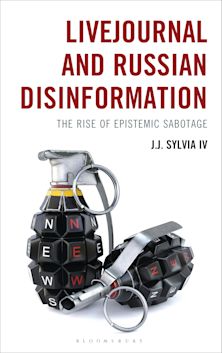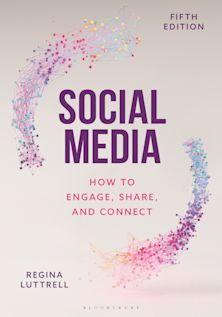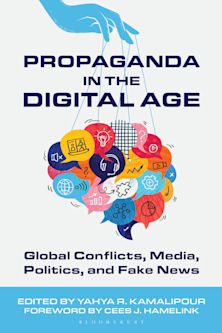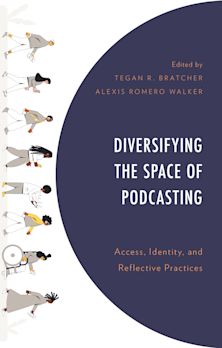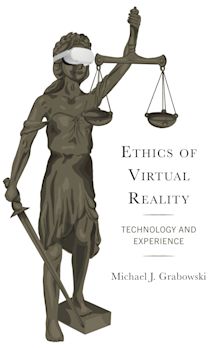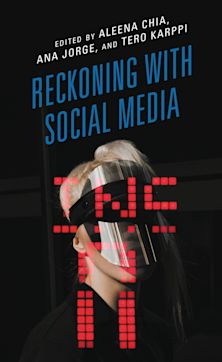- Home
- ACADEMIC
- Communication Studies
- Digital and New Media
- Television, Social Media, and Fan Culture
Television, Social Media, and Fan Culture
Alison F. Slade (Anthology Editor) , Amber J. Narro (Anthology Editor) , Dedria Givens-Carroll (Anthology Editor) , Benjamin Brojakowski (Contributor) , Jason Roy Burnett (Contributor) , Ryan Cassella (Contributor) , Garret Castleberry (Contributor) , Matthew Collins (Contributor) , Ted M. Dickinson (Contributor) , Marsha Ducey (Contributor) , Dan Faltesek (Contributor) , Krystal Fogle (Contributor) , Brian Geltzeiler (Contributor) , Steve Granelli (Contributor) , Michel M. Haigh (Contributor) , Leandra Hinojosa Hernández (Contributor) , Laura Kane (Contributor) , Shaughan A. Keaton (Contributor) , Jenny Ungbha Korn (Contributor) , Julia E. Largent (Contributor) , Corey Jay Liberman (Contributor) , William E. Loges (Contributor) , Kathryn L. Lookadoo (Contributor) , Christopher A. Medjesky (Contributor) , Darcey Morris (Contributor) , Sabrina K. Pasztor (Contributor) , Mike Plugh (Contributor) , Alane L. Presswood (Contributor) , Brody J. Ruihley (Contributor) , Alison F. Slade (Contributor) , Danielle M. Stern (Contributor) , Cynthia W. Walker (Contributor) , Nicholas Watanabe (Contributor) , Shelley Wigley (Contributor)
Television, Social Media, and Fan Culture
Alison F. Slade (Anthology Editor) , Amber J. Narro (Anthology Editor) , Dedria Givens-Carroll (Anthology Editor) , Benjamin Brojakowski (Contributor) , Jason Roy Burnett (Contributor) , Ryan Cassella (Contributor) , Garret Castleberry (Contributor) , Matthew Collins (Contributor) , Ted M. Dickinson (Contributor) , Marsha Ducey (Contributor) , Dan Faltesek (Contributor) , Krystal Fogle (Contributor) , Brian Geltzeiler (Contributor) , Steve Granelli (Contributor) , Michel M. Haigh (Contributor) , Leandra Hinojosa Hernández (Contributor) , Laura Kane (Contributor) , Shaughan A. Keaton (Contributor) , Jenny Ungbha Korn (Contributor) , Julia E. Largent (Contributor) , Corey Jay Liberman (Contributor) , William E. Loges (Contributor) , Kathryn L. Lookadoo (Contributor) , Christopher A. Medjesky (Contributor) , Darcey Morris (Contributor) , Sabrina K. Pasztor (Contributor) , Mike Plugh (Contributor) , Alane L. Presswood (Contributor) , Brody J. Ruihley (Contributor) , Alison F. Slade (Contributor) , Danielle M. Stern (Contributor) , Cynthia W. Walker (Contributor) , Nicholas Watanabe (Contributor) , Shelley Wigley (Contributor)
You must sign in to add this item to your wishlist. Please sign in or create an account
Description
Television, Social Media, and Fan Culture examines how fans use social media to engage with television programming, characters, and narrative as well as how television uses social media to engage fan cultures. The contributors review the history and impact of social media and television programming; analyze specific programs and the impact of related social media interactions; and scrutinize the past fan culture to anticipate how social media programming will develop in the future. The contributors explore a diverse array of television personalities, shows, media outlets, and fan activities in their analysis, including: Jon Stewart, Stephen Colbert, and Paula Deen; Community, Game of Thrones, Duck Dynasty, Toddlers and Tiaras, Talking Dead, Breaking Bad, Firefly, Buffy the Vampire Slayer, Army Wives, The Newsroom, Doctor Who, Twin Peaks, and The Man from U.N.C.L.E.; as well as ESPN’s TrueHoop Network and Yahoo’s Ball Don’t Lie; and cosplay.
Table of Contents
Ryan Cassella
Chapter 2: Spoiler Alert: Understanding Television Enjoyment in the Social Media Era
Benjamin Brojakowski
Chapter 3: Rhetorical Strengths & Limitations of Interactivity for Activism in the Stewart and Colbert Universe
Christopher A. Medjesky
Chapter 4: Fandom Communication in a Mediated Age: The Use of Twitter and Blogs for Dissent Practices Among National Basketball Association (NBA) Fans
Corey Jay Liberman, Michael Plugh and Brian Geltzeiler
Chapter 5: What Types of #SportsFans use Social Media? The Role of Team Identity Formation and Spectatorship Motivation on Self-Disclosure during a Live Sport Broadcast
Shaughan A. Keaton, Nicholas M. Watanabe & Brody J. Ruihley
Chapter 6: The Online Community: Fan response of Community's Unlikely Fifth Season
Matthew Collins and Danielle M. Stern
Chapter 7: Game(s) of Fandom: The Hyperlink Labyrinths that Paratextualize Game of Thrones Fandom
Garret Ca
Product details
| Published | Nov 11 2015 |
|---|---|
| Format | Ebook (Epub & Mobi) |
| Edition | 1st |
| Extent | 426 |
| ISBN | 9781498506175 |
| Imprint | Lexington Books |
| Illustrations | 4 tables; |
| Publisher | Bloomsbury Publishing |
About the contributors
Reviews
-
Comprising essays written by faculty, graduate students, and independent scholars, this collection reflects the current trend in fan studies to use fan practices to examine everyday life in a mediated age (as distinguished from using them to examine different fan communities). It is debatable whether the term 'fan culture' holds any meaning at this stage of academic examination. As the practices that made the subculture distinct have been absorbed into the mainstream or died off, 'fan' is becoming a generic term: a viewer who does anything more than view is a fan. Whereas most of the contributors frame their analyses within traditional fan communities formed through shared affinity for a specific television text, the focus of the book as a whole is on the interaction of social media and the medium of television—that is, how social media are used by fans to view and create content and by producers to market their content and monetize viewer engagement. Television programs and genres discussed include Game of Thrones, Dr. Who, Man from U.N.C.L.E., Duck Dynasty, Tiaras and Toddlers, The Daily Show and The Colbert Report, soap operas, and sports. Summing Up: Recommended. Lower-division undergraduates and above.
Choice Reviews
-
Today’s fans are actively engaging with television through social media. Drawing on the diverse expertise of a variety of researchers, Television, Social Media, and Fan Culture explores this engagement from multiple vantage points, and extends and develops new avenues in fan and media studies research. Sure to spark debate, this volume speaks to the importance of fan studies as a discipline and the crucial role that social media plays in this development.
Paul Booth, DePaul University
-
This engaging collection lies at the forefront of an emerging and essential cultural and technological dialogue. The trio of editors have assembled an impressive critical chorus, whose case studies chronicle and contextualize the complex triangulation of activity and interactivity between the evolving broadcast and cable programming environment, passionate fan communities, and the revolutionary ripples of an array of New Media platforms. The perspectives in the twenty essays are fresh and forward-looking and the views vast and varied. No network, link, site, genre, or fan base is overlooked. This impressive volume is trending, streaming, and tuned-in to the times. #Bigfan.
George Plasketes, Auburn University
-
Regardless of which fandom you belong to, you should read Television, Social Media, and Fan Culture. All fans of television or pop culture will revel in the intellectual fanaticism. Media and culture are inseparable, and the studies included in this edited collection acknowledge the pedagogy of popular cultural products and the new participatory fan culture.
Elizabeth Barfoot Christian, Louisiana College, editor, Rock Brands: Selling Sound in a Media Saturated Culture

ONLINE RESOURCES
Bloomsbury Collections
This book is available on Bloomsbury Collections where your library has access.











